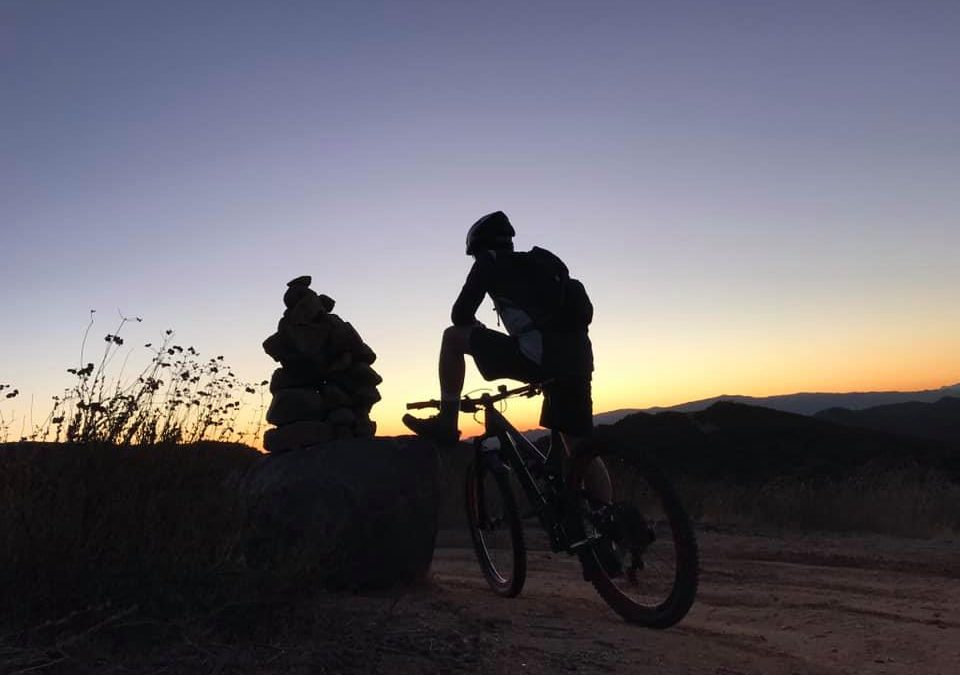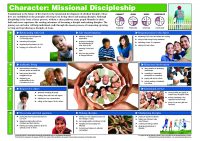
by Gary Reinecke | Nov 29, 2020 | Uncategorized |
Back in 1988 when I entered my first church staff position I accepted a challenging assignment. I had just graduated from seminary having been part of a church plant that was reaching 18-25 year-olds in So Cal(ifornia). Typically, this is that stage of life when young adults are wanting answers to life’s question and the last place most young adults want to look for those answers is the local church. Most churches in America are confronted with the challenge when students begin to drop-out of church. New Song Church was one of the first churches to make an impression in the conscience of young adults at that time. However, that experience did little to prepare me for what was next in my development.
Let me step back a bit. In the summer of 1987 I interned at a church in the downtown center of Phoenix, AZ. Today, downtown Phoenix is thriving. It is full of life, lot’s of cool restaurants, parks and thriving churches of all varieties (from missional/incarnational communities to classic churches that most of us experienced in our growing-up years) within walking distance of the capital.
When I first arrived in the summer of 1987, it was the exact opposite. The blueprint for the future painted the picture of what it has become today. Following graduation in 1988 I raised my financial support and made my way to Phoenix. For 7 years I labored in a difficult part of the city: crime, homelessness and drugs were commonplace. In short, I was hired to “grow” a dying congregation. I was naive enough to think I could partner with God to do something special in that place. Initially it was just me but later, another pastoral staff person, Gayle Parker and I joined forces on this adventure. We envisioned a multi-ethnic, multi-socio and multi-economic community that would be birthed from within the existing congregation, in effect, a church within a church. What we learned could fill an entire year of blogs. Since then I have coached many leaders who have variations of the same vision and have learned some of the do’s and don’ts of multi-ethnic ministry;robust a and continue to learn more and more each passing year. To save you from reading a year’s worth of blogs on my experience, let me share three questions to consider if you are planting, or becoming a multi-ethnic church.
- What is your “why”?
- This is first because it is most important. Thousands, or at least hundreds of pages have been written on the how-to’s of multi-ethnic ministry but few, in my estimation, have done sound and robust theological reflection to unpack “why” churches need to move beyond their particular ethnic bent or affinity group. Right now it is clear the church needs to play an important part in the mission of Jesus to demonstrate how people can live alongside each other, build authentic relationships and break down the walls that separate us. I remember the conversations we had as a leadership team around the “why” of our vision for being “multi”. We were not attempting this bold vision to be inclusive because it was trendy, popular or politically correct – we were dong it because God cares; therefore, we too must care! Until this is clear in the mind of the leadership, anchored in the heart and clearly communicated in a compelling and engaging style – you will have difficulty convincing anyone!
- Suggested Resource: Reading While Black by Esau McCaulley
- How will you create a culture of diversity?
- Back when we were planting a “church within a church” we learned that one of the most important statements we needed to make was to have a diverse leadership team. I would suggest that it is much, much easier to do at the very start of the church planting process than to move an existing church in this direction. If you don’t have that luxury than as soon as you are able, bring people into leadership that you are wanting to reach that are under-represented in your congregation. Our goal was to make a place at the table for people that were very different than the majority of the existing congregation and us – and more representative of the community we were called to reach.
- Suggested Resource: Ethnic Blends by Mark Deymaz
- What is your leadership development strategy?
- Developing leaders from the Harvest for the Harvest is a clever way to say, “developing leaders beginning with people who are not currently in your church – starting with the newest disciple”. However you state it your team must have a clear path for disciplemaking and leader development. It can’t be too complex. It must be clear, focused on character formation and skill development. The formal name of this strategy is a Leadership Farm System.
- Suggested Resource: Leadership Collective for Multi-Ethnic Leaders launches March 7-9, 2021
The end of the story is kind of cool. That church eventually went through the predictable life cycle of any church. The overhead of managing the facility was too expensive for the congregation we had planted so in 2009 they decided to sale the property to the congregation mentioned below and with the proceeds, purchased a warehouse they converted to a worship and community center. Unfortunately, a poor financial decision led to it’s demise. However, the building that we once inhabited is now host to a thriving, multi-site, Hillsong campus – CLICK HERE. Four years ago I was in town and fortunate enough to visit with my wife Gina. I am thankful to see the work that was started in 2008 had come to fruition.

by Gary Reinecke | Nov 20, 2020 | Uncategorized |
Praying you and your family have a safe and blessed Thanksgiving!
“The Lord bless you
and keep you;
the Lord make his face shine on you
and be gracious to you;
the Lord turn his face toward you
and give you peace.”
Numbers 6:24-26
Thank you for your continued dedication to:
-
make more and better disciples
-
create environments to train leaders
-
plant healthy churches that reproduce
Imagine a world that had a local church in every community where apprentices of Jesus were living out their faith in every aspect of their lives. I love the following quote by Timothy Keller that encompasses the reason why InFocus exists:
New church planting is the only way that we can be sure we are going to increase the number of believers in a city and one of the best ways to renew the whole Body of Christ.
I have the absolute privilege to work with amazing leaders who are striving to make the world a better place!

by Gary Reinecke | Nov 11, 2020 | Uncategorized |
The photo above is at sunset after riding a gnarly uphill out back we call Jacuzzi Hill (because someone dumped their jacuzzi in the beautiful hills of Murrieta, CA). It is a 25.2% grade (very steep), technical and challenging. Since it had rained recently, I was able to navigate it successfully (which I have only done on 1-2 other occasions over the last 12+ years of riding this particular trail).
As I recovered I paused to take in the beauty.
As Christian leaders it is important to pause to reflect on how we can more effectively engage people in their disciplemaking journey? Back in the spring when we pivoted to a remote small group via Zoom I thought this was going to be a difficult challenge; but then my perspective began to change. Instead of seeing virtual interaction as a substitute for the “real’ thing, I shifted my perspective to engagement. Regardless if we meet in person or virtually the question remains – “How can we support people in their disciplemaking journey?”
That question helped me realize that the debate between live, in-person vs. virtual is a secondary issue for disciplemakers. I’ve read about trendy techniques to keep the interest of people using platforms like Zoom e.g. smile, lighting, sound, backgrounds, etc. While these things are helpful I have discovered three invaluable lessons to engage and keep people engaged in their disciplemaking journey: BE FUN, BE AUTHENTIC and BE CHALLENGING.
The names of our small group leaders and participants has been changed for purposes of anonymity. Let me unpack each of these aspects below:
BE FUN – How can our leadership team lead with a fun factor to open the discipleship conversation?
- Note – don’t do this alone! We have a fantastic leadership team. Two couples who really love the Lord, each other and our small group. If you are attempting to do this alone – stop whatever you are doing and invite others into your mission.
- One way we express that love for our small group is through ice-breakers. And I mean thoughtful, fun and meaningful ways of breaking the ice at every small group gathering. This is one place we need to think of the unique challenge of meeting online.
- Traditionally, at the outset of a new small group term we spend more time getting to know each other and then taper-off as we get more and more comfortable. However, in this season where we are meeting socially distanced online we have made ice-breakers a high priority. We have learned that every week is a new start, introducing people who have missed a week or two to the “regular” members of the group. In fact, we have one of our leadership team members dedicated to creating engaging ice breakers every week.
- Here is one fun idea “Marje” suggested for Halloween. Three weeks prior, she asked everyone to come to the meeting just before Halloween with a decorated pumpkin – not carved, decorated. This allowed everyone to participate. Initially Gina (my wife) and I were very slow to get going. But after we gathered our decorations and discussed ideas, our competitive instincts kick-started our creative juices and we were on our way before we knew it. The next night, everyone was excited and showed-up with a pumpkin. Each person presented their pumpkin and the materials used. We laughed, we pointed at each others creation and we celebrated – then voted. That’s right, we were given 15 categories to vote with the hope that everyone would be a winner. And the next day, “Marje” personally delivered prizes to the winners! It is amazing what that single event has done to connect people.

Our entry in the Pumpkin decoration contest
BE AUTHENTIC: How can our team be real and genuine in supporting our people on their discipleship journey?
- When it comes to the technology challenges, the best advice I would suggest here is – “relax”. Everyone is dealing with the same issue. Be transparent and honest with those struggles.
- As always whether meeting online or in person, lead with your struggles when it comes to your discipleship journey.
- Before we even met for our fall term our team invited all of our people to meet in smaller groups (groups of 2-5) in backyards to reconnect or meet each other for the first time.
- Because people are missing the human touch, I would suggest increasing your use of texting (or whatever medium you choose) to “touch” your people.
- Beyond the regular meeting utilize text between sessions to encourage, pray and support each other.
- Most important – pray! Pray during the sessions, pray in prep for your small group meeting and following. Moresoe than ever, people need to sense they are not in this alone but that the Holy Spirit is alongside them every step along the way.
- We have a critically ill person in our group. His journey is long and hard. It is complicated by the season we are in right now. We ask for and receive updates via text, our people are quick to let him know that he is cared and prayed for.
BE CHALLENGING: How can we challenge people to stay the course on their discipleship journey?
- I use a coach-approach in making disciples. Leaning heavily into listening and asking questions is extremely effective in helping people engage in their discipleship journey. Here are a few questions that I have found to be helpful:
- Disciplemaking coaching questions:
- Where are you on your disciplemaking journey?
- This infers people are aware of a disciplemaking journey like the Missional Discipleship storyboard – see below.
- What are you doing to move forward in your disciplemaking journey?
- Who are you engaging in their disciplemaking journey?
- Where are they on their dsiciplemaking journey?
- What questions can you present to challenge them to take the next step on their disciplemaking journey?


by Gary Reinecke | Nov 6, 2020 | Uncategorized |
Let me share with you about my mountain bike journey.
In 1993 my wife (Gina) and I decided to share a hobby we both had aspired to but never pursued individually – mountain biking. Probably, just like you, we had bikes as kids and did all the normal things you do on a bike. We understood the basics: balance, braking, turning, etc. But we wanted more.
Little did we know that would lead us into so many amazing adventures over the next 3 decades as we moved from thinking about mountain biking, talking about it to being about it.
We made a commitment. That led us to research various bike options. One of our friends from church was deep into biking and worked at a cycle shop. So we asked him to help us purchase bikes that fit our goal of getting out on the trail and learning how to maneuver the desert terrain of Phoenix, AZ on a two-wheeled apparatus.
Truth be told, Gina is a stronger rider than I am. She is more daring. More adventurous. And significantly faster. I have to work hard to keep up with her. It is genuinely frustrating, but we love the challenge and joy of mountain biking.
What can we learn from mountain biking that we can apply to disciplemaking?
I am glad you asked.
Earlier I mentioned that we went through this process of thinking about mountain biking, talking about it and finally being about it. These three stages were important and necessary. If we had only thought deeply about mountain biking, it may never have crept into our conversation. And if we had simply talked about the great times we would have riding mountain bikes; we might have never gotten around to actually getting our bodies on the two-wheeled piece of aluminum (or carbon fiber) and flung ourselves down bone jarring downhills or pedaled vigorously, climbing technical trails to ascend steep peaks with the reward of amazing views awaiting us.
If these three processes are important for mountain biking, is it possible that Christians in the West are stuck in a cycle of thinking and talking about discipleship to the neglect of being about discipleship?
Could this dynamic on an individual level be a systemic issue occurring in our churches?
Here is you chance to move from thinking and talking about discipleship to being about discipleship.
I know that this does not happen over night, so we are offering a combination of a 4-hour webinar followed by 4, hour-long coach triads over a 4 month period (December 2020-March 2021). Each triad consists of a coach facilitator and two participants.
Below are the details for both opportunities!
4 BUILDING BLOCKS FOR DISCIPLES AND DISCIPLE COACHES:
WEBINAR + COACHING TRIADS
-
- Description: Orientation + Implementation of the 4 Building Blocks for Disciples and Disciple Coaches
- Dates:
- 4-hour webinar – November 16, 2020 from 10amPST-2pm PST (1-5pm EST)
- Four, hour-long coach triads over a 4 month period (December 2020-March 2021) – dates TBD with participants
- Cost: Webinar + Coach Triads – $475
4 BUILDING BLOCKS FOR DISCIPLE & DISCIPLE COACHES:
WEBINAR ONLY
-
- Description: Orientation to the 4 Building Blocks for Disciples and Disciple Coaches
- Dates: November 16, 2020 from 10amPST-2pm PST (1-5pm EST)
- Cost: Webinar ONLY – $250





